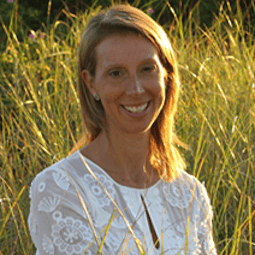I took a minuscule sip of the dot-com Kool-Aid in the late-1990s—with pencil thin eyebrows and vampy burgundy lipstick (and a teeny-tiny chip on my shoulder), I temped answering phones for a tech company.
Unfortunately, the gig wasn’t exactly translating into dollar signs, so I took full advantage of the free dial-up and scoured the newish Craigslist (then strictly local to the SF Bay Area) for a new job opp.
I soon jettisoned my goth accoutrements and went to grad school, while my buddy Craig grew into the global juggernaut of (sometimes questionable) classifieds that we all know today. But, recently, using those same well-honed Internet scouring skills—I stumbled upon a new list.
Say hello to Jill Shah, serial entrepreneur and founder of Jill’s List—a place to land for reliable reviews on credentialed acupuncturists, massage therapists, health coaches, Pilates instructors, integrative physicians (docs who incorporate traditional Western medicine with alternative and complementary modalities), and more.
When I think back to my own clinic days—I was literally steamrolled by a jam-packed appointment schedule and an ever-ringing phone. Finding a spare second to check the credentials of a local acupuncturist just wasn’t going to happen. So when an easy-to-use tech-based “list” popped up in my Google search, I got excited.
And it turns out, I’m not the only one interested: Since it’s inception in 2010, Jill’s List has been the talk of the town among Boston physicians and over 20,000 employees have signed up for premium access to the site.
I sat down with Jill and got the goods on why she delved into the complementary and alterative medicine (CAM) space, and why consumers and healthcare professionals are following suit.
You had a long-standing history as an entrepreneur in the Internet and software industry before jumping into your role as CEO of Jill’s List—what piqued your interest in integrative medicine?
Healthcare kind of hit me in the face. I got pregnant, we delivered our first son—and I lost a third of my blood after the delivery. I’d never been sick in my life. They rushed me into emergency surgery and somebody whispered in my ear about “a hysterectomy.”
They didn’t have to do the hysterectomy, and although I had lost a lot of blood, the MD advised against a blood transfusion. He said, “You’re just going to be really wiped, but you’re really healthy and you should be able to build back your blood. Eat a lot of meat.”
So I had a new baby and was really sick—and a friend said, “You should try acupuncture.” I saw this great guy up at Canyon Ranch [a health and wellness center in Lenox, Massachusetts] who gave me acupuncture and herbs.
I honestly started feeling better within days, and was so much better in a couple of weeks. I called him and sort of jokingly said, “What was in those herbs you gave me? I feel spectacular…” and he said, “I gave you what most women take in China after birth because it nourishes the blood.”
[Meanwhile], my dad was diagnosed with prostate cancer and my mother had cancer as well. My husband also told me that every male in his family had died of a heart attack. I said, “Oh, I gotta take care of you!” So I started to seek out other modalities that I didn’t know about—homeopathy, naturopathy, energy healing, and massage therapy to treat chronic pain.
How did this need for knowledge develop into Jill’s List?
You become a woman, and at some point you grow into being the Chief Medical Officer of your home—and you don’t have a lot of tools. I was using my friends and other smart women who were having great experiences as resources.
And there is the Internet, and when you try to find somebody there—maybe you get to Yelp, but you don’t know anything about credentials or who these people are. Or even worse, you get on some site with flying Buddhas or weird waterfall noises. It doesn’t feel credible. It wasn’t matching the experience that I was having on the treatment side with these unbelievable practitioners.
There was the entrepreneur in me that said, “There’s got to be a business in there!” I thought, “Jeepers! There is this whole other side of healthcare that is unexposed. We’re only getting half a menu when we’re given choices by the insurance companies.” And so, that was the genesis of Jill’s List.
How has the traditional Western medical community received Jill’s List?
We’re at the point where MDs have seen us, and found us very credible. We built out a private secure referral tool so they can refer their patients to CAM providers and track everything. They get feedback from the CAM practitioner and we ask the patient to give feedback to the [referring] MD about their experience. Multiple hospitals are being trained on Jill’s List, and we are piloting it with doctors in the Boston market.
Why do you think the response has been so favorable?
I think the reason that our technology is so adoptable is that we really listen to where the frustration is coming from.
The doctors were saying, “We believe that things like yoga and nutrition and acupuncture are really important, but we don’t have a second in our day to go build out those networks. We don’t have a way to track it.” What they need is time to be with the patient and better tools—and they need the other side of the menu, too.
What are the differences you’ve seen between the tech and healthcare worlds?
The tech world is super fast and it’s very supportive—if you meet someone and they know someone who you should meet, they will introduce you. You’re not afraid to fail, because failure just means you’re going to find the next thing.
I find [healthcare] to be much more competitive and less inclusive, and I think there are lots of reasons.
It’s much slower, totally tripped up by the payer system and by all kinds of legalities—the stuff the MDs have to face between HIPAA [a patient confidentiality law] and medical liabilities. So you can see where the slowness comes from: It’s a much more methodical industry.
On the other hand—it is loving and caring and it really wants to do the right things. Inherently, it knows what to do for the patient, but it lacks the time, money, and decision-making support. And somehow, it now lacks the patient, because we’ve done so many things to exclude them from their own health decisions. But, I think MDs are now really aware of this.
Any advice for those thinking about making the leap into healthcare entrepreneurship?
You have to think through what is ready to be resolved now. Don’t be too far ahead of the problem, because there are lots of problems to solve today.
At least in Massachusetts (and I think in a lot of places in the country), healthcare is going to change aggressively toward managed care or an ACO [accountable care organization] model. If you’re a data person, there are all kinds of data aggregation, data assessment, and data integration needs to do the right kind of reporting. A lot of talk is focused on big data and precise data. Essentially, we are now really good at getting data—the key will be in who can create ways to assess and analyze this data to make it useful. You could jump in and make a great company.
If you’re into the CAM side of it, I think you’re in for a huge rise. For example, yoga is growing at 12% a year. And, if you’re in the investment space, health saving accounts are really interesting.
I think you have to have a passion for helping healthcare evolve. Those who will be very successful in the industry are looking toward creating momentum.
Our series on female founders in healthcare continues in two weeks with the inspiring team behind Design My Meals—an online tool that makes meal planning easy and helps you use gorgeous, locally grown, and organic foods.

